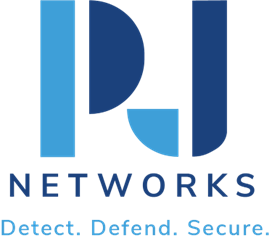The Rise of Zero Trust Security: Is Your Business Ready?
Zero Trust, cybersecurity, and insider threat are not just buzzwords for 2024. They’re becoming the cornerstone of network security. As we step into the future, the question is, is your business ready?
Introduction to Zero Trust
Have you ever thought, Can I really trust everyone inside my network? If you’re like most business leaders, you’re concerned about maintaining security while embracing new technologies and remote work environments. That’s where Zero Trust comes in.
Zero Trust is a security approach where, by default, nothing inside or outside a network is trusted. All access needs to be verified before granting permissions. It transforms how we think about security by continuously questioning trust and ensuring everything is verified, whether it’s a person, a device, or a system.
Why Zero Trust is Crucial in 2024
With the rapid evolution of technology, traditional security measures are becoming inadequate. Here’s why Zero Trust is essential now:
- Rising Insider Threats: As data breaches become commonplace, organizations are recognizing that threats often originate from within the network.
- Increased Remote Work: The shift to remote work has dissolved traditional network perimeters, making it imperative to secure every endpoint.
- Compliance Requirements: Regulations like GDPR and CCPA demand more stringent security practices, which Zero Trust can help achieve.
- Advanced Threats: Cyber threats are getting more sophisticated with attackers now targeting identity and access management, which makes the Zero Trust model crucial.
Key Pillars of Zero Trust
So, what makes Zero Trust so robust? Let’s discuss its key pillars:
- Verify Identity: Always verify identity using multi-factor authentication. It’s about ensuring that the person is who they claim to be.
- Least Privilege Access: Only grant permissions necessary for the user to perform their duty. Limit access to sensitive data.
- Microsegmentation: Divide your network into segments. This helps in containing breaches and preventing them from spreading across your network.
- Monitoring and Analyzing: Continuously monitor traffic and analyze behaviors to identify and respond to threats quickly.
Steps to Implement Zero Trust
Want to start implementing Zero Trust but not sure where to begin? Here are the steps to get you started:
- Assess Your Current Security Posture: Understand your existing network and identify areas that require immediate attention.
- Map Your Data Flow: Know where your data resides, how it flows, and assess risks involved in each step.
- Build a Robust Identity and Access Management Policy: Implement solutions that enhance identity verification and privilege management.
- Invest in Technology: Adopt tools and technologies that support Zero Trust, like endpoint protection, anomalous detection tools, and encryption solutions.
- Continuous Monitoring and Feedback: Establish a protocol for continuous monitoring and feedback loop to ensure your policies are effective.
Zero Trust is more than a security approach; it’s a cultural shift in how we protect our organizations. As we look towards 2024 and beyond, embracing Zero Trust is not just advisable—it’s essential for staying ahead of the curve in network security and combating insider threats.
